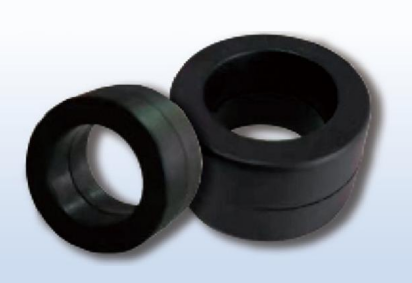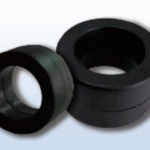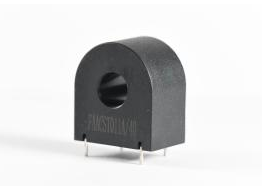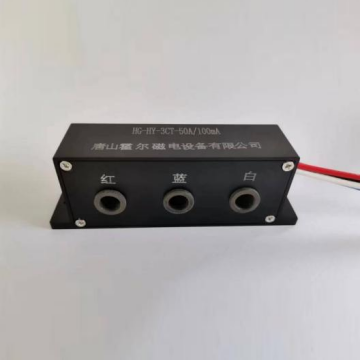The Advantages of Amorphous Cores and Role in Toroidal Applications

In modern power systems and electronics, efficiency, reliability, and compactness are absolute necessities. Of the unsung heroes that make them possible, one is the amorphous core. From transformers to inductors, amorphous materials transform the storage, handling, and transfer of energy. Perhaps one of the most important designs using this technology is the toroidal core, and as a combination, the amorphous toroidal core is one of the most efficient magnetic solutions yet.
Understanding Amorphous Cores
Amorphous cores consist of metallic glass, an amorphous material lacking the crystalline structure of conventional silicon steel. The new structure means lower energy loss because the random arrangement of atoms prevents the movement of magnetic domain walls. The result is significantly less core loss, increased electrical resistivity, and increased efficiency compared to conventional materials.
These traits make amorphous cores well-suited for applications where energy usage efficiency and lower heat production are critical. For example, in distribution transformers, the use of an amorphous core can cut core loss by as much as 70% against silicon steel, and decrease wasted power, ultimately reducing operating expenses.
The Toroidal Core Importance
A toroidal core is a ring-shaped magnetic core that finds extensive application in transformers, inductors, and chokes. The ring shape minimizes leakage flux but maximizes magnetic coupling, reducing electromagnetic interference (EMI). Such a shape is extremely prevalent in small electronic circuits and high-frequency use because of its high efficiency with space-saving benefits.
The second advantage of the toroidal core is that it can trap the magnetic field almost entirely within the core material. This trait serves to eliminate stray radiation and prevent nearby sensitive components from being affected. When equipment is being miniaturized and electronics compacted, this is an important degree of precision.
Power of the Amorphous Toroidal Core
A combination of the efficiency of the amorphous core and toroidal core geometry leads to the amorphous toroidal core. The structure enables excellent performance across a wide range of applications.
The amorphous toroidal core’s extremely low core losses render it suitable for switching power supplies with high frequency, audio equipment, renewable energy applications, and precision applications. Its size factor is small enough that products can be miniaturized without compromising on efficiency. Additionally, the high resistivity of amorphous material maintains eddy current losses at a minimum in high-frequency applications, an important consideration in such applications.
In the renewable energy sector, where saving every watt is taking the system one step towards efficiency, the amorphous toroidal core is the focus. Wind turbines, photovoltaic cell inverters, and energy storage systems are all embracing this technology to enable effective and stable conversion of energy.
Applications by Amorphous Toroidal Cores
Power Electronics: DC-DC converters and switching power supplies rely on amorphous toroidal cores because of their ability at high frequency to have low energy loss.
Telecommunications: Amorphous toroidal core inductors are responsible for reducing noise and improving signal purity in sensitive circuits.
Medical Devices: Miniature but strong, amorphous toroidal cores provide the possibility for smaller monitoring and diagnostic devices.
Renewable Energy: Amorphous core reduces losses of energy between inverters and transformers and encourages environmentally friendly solutions.
Audio Engineering: Toroidal cores minimize distortion in sound systems for high-fidelity purity of sound.
Advantages of Amorphous Toroidal Cores
Energy Efficiency: Lower core loss means lower usage of energy and less heat dissipation.
Compact Size: Toroidal form allows for compact devices without compromising functionality.
Low Electromagnetic Interference: Enhanced magnetic field confinement means cleaner, smoother operation.
Durability: Amorphous cores resist aging and offer long-term performance.
Environmental Benefits: Lower energy loss means lower carbon emissions, which is in harmony with green policies.
Future Future
As industries shift toward cleaner and less wasteful technology, amorphous cores can do nothing but increase their presence. As the world continues to crave more renewable power and smaller-sized electronics, the amorphous toroidal core presents itself as a building block of future power systems. Their makers advance material processing and cost savings, making advanced cores more and more the norm.
Conclusion
The magnetic components industry is often out of sight, but it is the touchstone for innovation today. The union of the amorphous material and the toroidal core design is unbeatable for efficiency, miniaturization, and reliability. In renewable energy, telecommunications, or precision electronics, the amorphous toroidal core is becoming the solution everywhere to the demands of today and the innovations of tomorrow.





